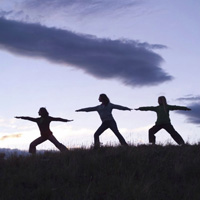


History of Yoga
The Yoga Sutras of Patanjali are seen as perhaps the most influential written testimony to the blueprint for living, that is yoga, in that Patanjali is credited with compiling what was already existing knowledge. Within the broad category of what is yoga, Patanjali talked of Raja (royal) yoga, the ultimate goal of which is meditation, leading to what we today might describe as nirvana.
Prior to or around the time of Patanjali, we have the Hindu scriptures, the Upanishads and later the Mahabharata (of which the Bhagavad Gita is the most well known of all epics having a strong influence on the philosophy of yoga) which gave us our earliest references to yoga being a way of living the right life, with concepts of selflessness and detachment - amongst others - being included as rules of conduct and discipline which enable one to attain enlightenment.
But archeological discoveries suggest that our ancestors were practising something akin to spirituality, yoga and meditation well before anything was committed to writing: experts have excavated a statue depicting a fertility god seated cross-legged in a yoga posture at the city of Mohenjo-daro, in what is now Pakistan and the statue is said to date back to around 3000 BC.
So it seems that mankind has had a fascination and desire to learn about the self from almost the dawn of recorded history.
Hatha yoga is the term used for the yoga of 'movement' and today most forms of yoga incorporate hatha yoga within them.
"Yoga is the settling of the mind into silence."
∼ Yoga Sutras of Patanjali



